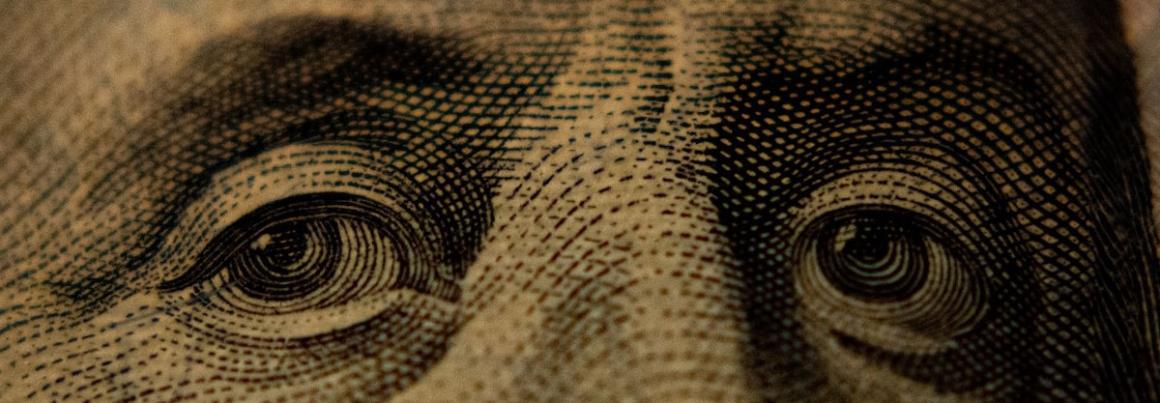
The Psychology That Brought Down SVB Is Not Going Away
By Hersh Shefrin
Just four months ago, I warned about underestimating the huge role which irrationality plays in bank runs. I call the phenomenon “excessive rationality-assumption bias.” Now we are seeing this bias play out globally, beginning with a run on Silicon Valley Bank and spreading to Credit Suisse, which was just acquired by its larger competitor UBS.
Irrational behavior is part of human psychology. It is a mistake to think that depositors, bank executives, the media, and regulators can be counted on to behave rationally. Consider each in turn.
It is a mistake to believe that depositors can be counted upon to behave rationally. Depositors are people, and people are psychologically hard wired to experience a “fight or flight” reaction to fear. For Silicon Valley Bank, depositor flight by a few was propelled by crowd psychology into a panic involving many.1
In Shakespeare’s play Hamlet, Hamlet uses the phrase “thinking makes it so.” Was Silicon Valley Bank fragile when it collapsed, or did depositor thinking instead make it so?
Silicon Valley Bank was solvent when it collapsed and was taken into receivership. Its assets, more than $210 billion, held more than enough value to cover the bank’s deposits, about $175 billion.
It is a mistake to believe that media reporting will be free of psychological bias. When I was interviewed by the media the day the bank failed, I was struck by three things. First was lack of awareness about the bank being solvent. Second was surprise—indeed disbelief—at hearing that the bank was solvent; and third was the reluctance to discuss solvency among the issues being covered.
Psychologically, solvency was not a salient issue that week, and this non-salience reinforced the bank run dynamic. It was panic that was salient, as about 90% of Silicon Valley Bank’s deposits were uninsured, and therefore at risk.
During the week of the collapse, there was much media commentary about depositors being at risk of incurring major losses from the bank collapse. In my remarks to the media at the time, I said that I thought the risk was overblown. I suggested instead that insured depositors would have access to their deposits on the next business day, and would have access to uninsured deposits shortly thereafter. However, that message got overlooked in the media coverage, which was dominated by the emotion of the moment.
It is a mistake to believe that bank executives can be counted on to behave rationally. Overconfidence by Silicon Valley Bank’s leadership was part of the psychological phenomena which led to its collapse. There are several facets to being overconfident. People can be overconfident about their own abilities, thinking themselves to be smarter than they actually are. People can be overconfident about how much they know, leading them to underestimate risk. It seems to me that the Silicon Valley Bank leadership exhibited both types of overconfidence.
Ironically, the 2022 Nobel prize for Economics was awarded to three economists for work on bank runs. This work explains why deposit insurance is a critical ingredient for limiting the risk of bank runs. Depositors who know their deposits are insured and safe are much less prone to become panicky and withdraw their funds at the first sign of bank weakness. The theory applies to banks where most bank deposits are insured, by virtue of being less than $250,000 per depositor. The theory does not apply to Silicon Valley Bank, or to similar regional banks such as Signature and First Republic.
People who are overconfident are surprised more frequently than they anticipate. I think it is safe to say that the Silicon Valley Bank executives were surprised to see their bank collapse the week before last.
Prudent risk management for a bank like Silicon Valley Bank means its executives recognizing that traditional bank run theory does not apply to their institution. Prudent risk management means recognizing that their bank faces greater a higher bank run risk than more typical, banks. Prudent risk management means taking measures to address the higher risk. Such measures include having higher capital cushions, securing lines of credit with large banks to deal with large deposit withdrawals, and hedging the risk in their portfolios.
The critical risk in Silicon Valley Bank’s portfolio pertained to Treasury bond interest rate risk associated with inflation. Inflation was low when the bank purchased those bonds. In April 2020, at the outset of the pandemic I warned that policy makers needed to be judicious about economic stimulus, lest that stimulus reignite inflation.
Prudent risk management also means managing the signals the bank sends to markets by its words and actions. It means catering messages and actions to a world where depositors, and markets generally, are skittish and subject to bouts of irrationality.
In a perfectly rational world, banks understand how their words and actions will be interpreted by market participants, and market participants make correct inferences from those words and actions.
As an aside, I need to say that there is a rational element to bank runs. Nobel laureate George Akerlof developed a theory to explain how information asymmetries can lead markets to collapse. If depositors do not have the information to be confident that their deposits are secure, then withdrawing their uninsured deposits makes sense. If uninformed depositors see other depositors rushing to the exit, and follow the “imitation heuristic,” they will join the rush and contribute to an “information cascade.”
I am not certain that Silicon Valley Bank would have collapsed in a perfectly rational world. Remember that the bank was solvent when it collapsed. It did incur a $2 billion loss from selling $21 billion of Treasury bonds in order to meet withdrawals; and it did seek to sell new bank shares to replenish its capital. Neither posed an imminent threat to uninsured deposits. Nevertheless, there is a (rational) market signaling issue associated with selling new equity in the presence of asymmetric information. The issue is that potential new shareholders interpret the action as signaling that executives have negative information which they are reluctant to share.
The thing is that we do not live in a perfectly rational world. Prudent risk management requires choosing words and actions to cater to imperfectly rational market participants. If large realized losses spook skittish depositors and investors, then it makes sense to spread transactions over time to make them less salient.
It also makes sense to be active and not passive about messaging. Being active entails engaging in public relations messaging which emphasizes the degree of solvency and its implications for the safety of deposits.2 Being passive means relying on brand image and reputation, assuming that depositors and the market will continue to recognize the bank as the brilliant institution its executives imagine it to be.
It is a mistake to believe that regulators are rational. There is a sense that if Silicon Valley Bank were to have been regulated as a systemically important bank and subject to stress tests, then it would not have collapsed. However, the stress tests that would have been used by bank regulators were biased by virtue of being anchored on past lower rates of interest rather than on current Federal Reserve policy. Technically, this bias is consistent with the psychological phenomenon called anchoring-and-adjustment. Zero-adjustment qualifies as status quo bias. In addition, during 2022, the Fed actually placed Silicon Valley Bank under a supervisory review, and continually warned the bank that its risk analysis was faulty.3
In the 1930s, Franklin Delano Roosevelt told the country that “we have nothing to fear but fear itself.” Well, in the case of bank runs, bank executives would be well advised to fear fear; and they need to manage fear, even when it is irrationally-based. Not doing so means succumbing to excessive rationality-assumption bias; and as we have seen during the current bank run crisis, that can be dangerous.4
- According to the San Francisco Chronicle, venture capitalist Peter Thiel of Founders Fund was among the first to withdraw deposits, and to encourage others to do likewise.
- Indeed, Silicon Valley Bank did begin to contact major depositors, telling them that their deposits were safe. However, that appears to have been too little, too late.
- This point connects back to overconfidence on the part of bank executives.
- A major insight from the bank run analysis is that bank relationships are crucial. The loss of these relationships during the bank runs which occurred in the Great Depression had a significant impact on prolonging the economic downturn. There is a risk that the collapse of Silicon Valley Bank will have a significant negative impact on Silicon Valley’s startup economy.
This column originally appeared in the March 19, 2023 edition of Forbes.
Photo courtesy of Unsplash.

